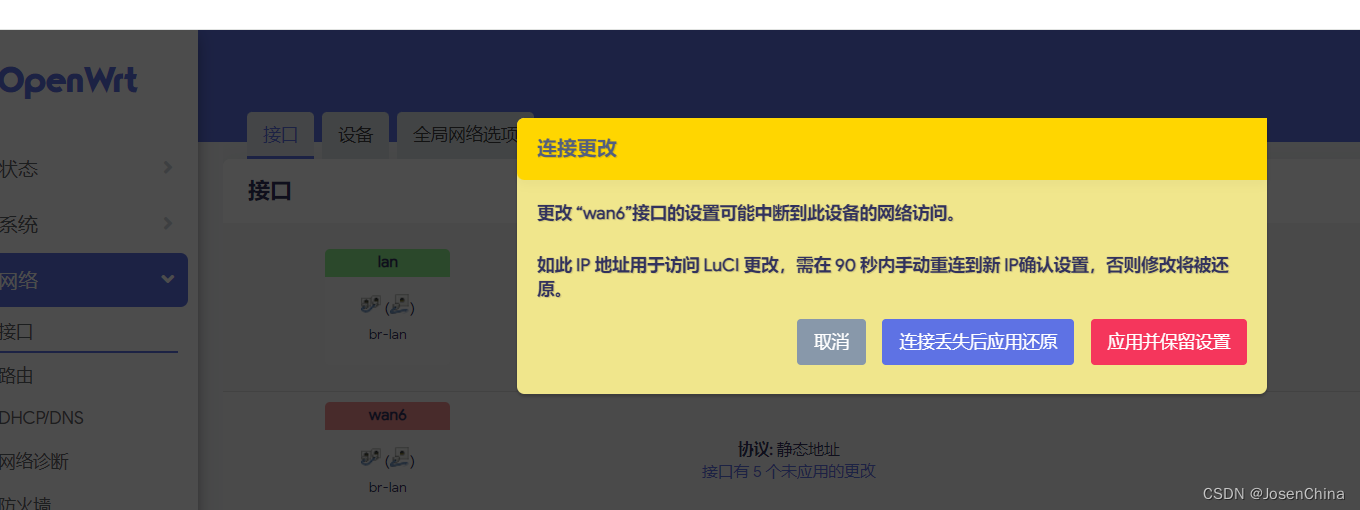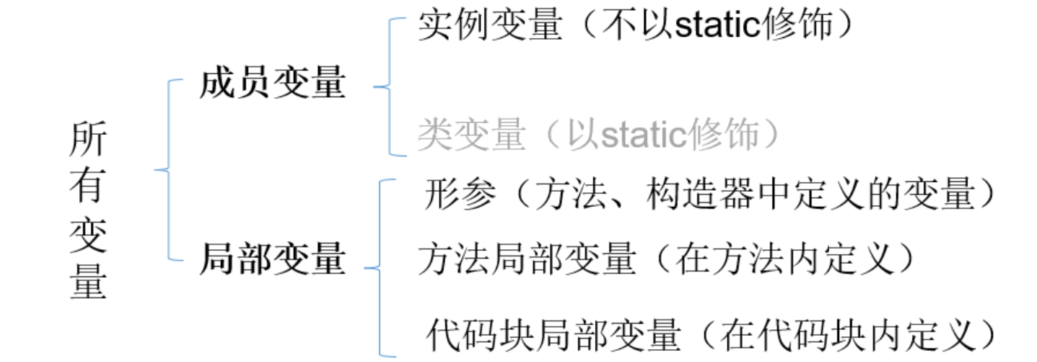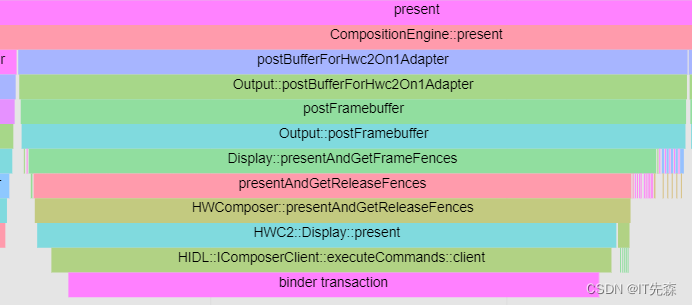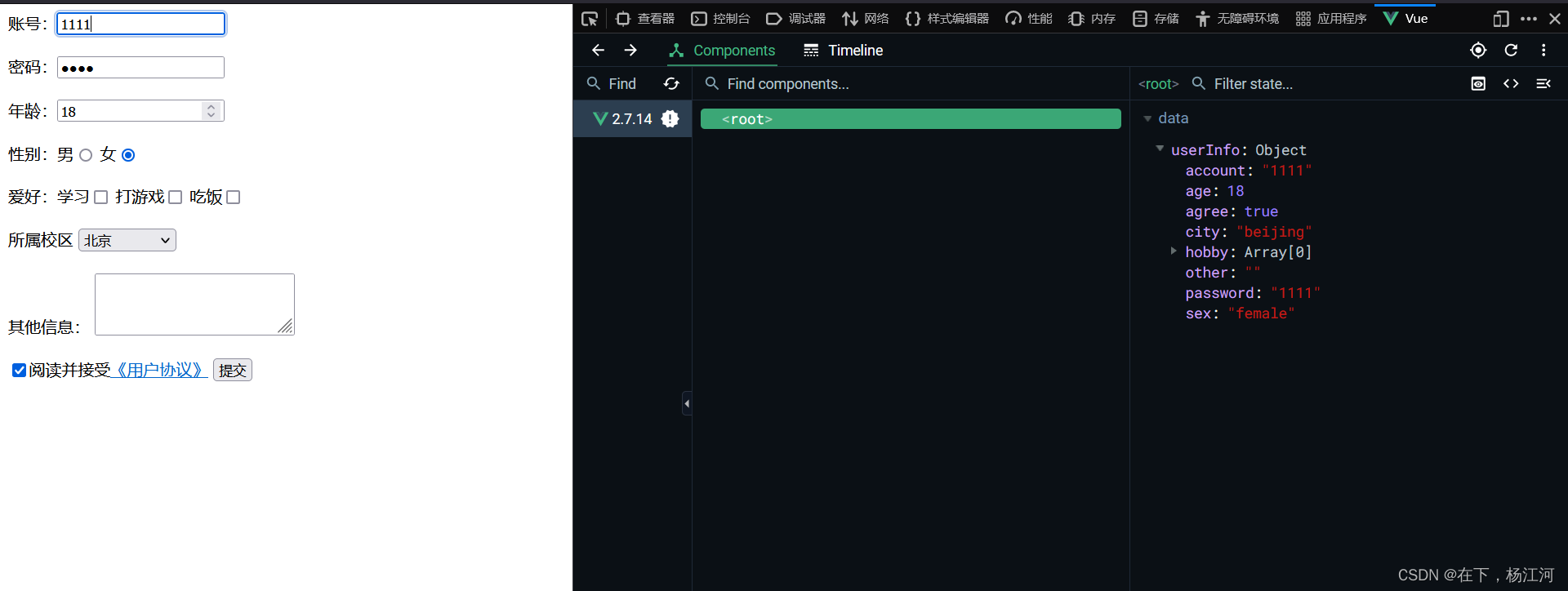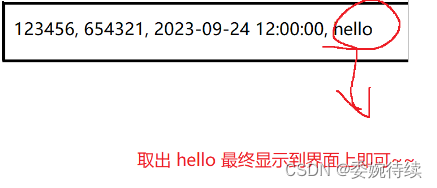题目描述
给你一个链表的头节点 head ,判断链表中是否有环。
如果链表中有某个节点,可以通过连续跟踪 next 指针再次到达,则链表中存在环。 为了表示给定链表中的环,评测系统内部使用整数 pos 来表示链表尾连接到链表中的位置(索引从 0 开始)。注意:pos 不作为参数进行传递 。仅仅是为了标识链表的实际情况。
如果链表中存在环 ,则返回 true 。 否则,返回 false 。
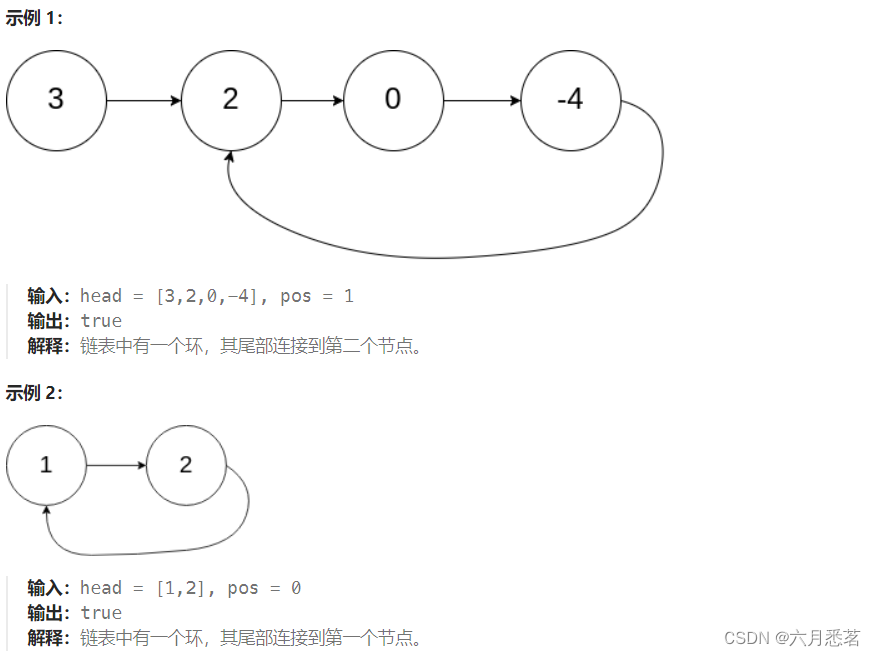
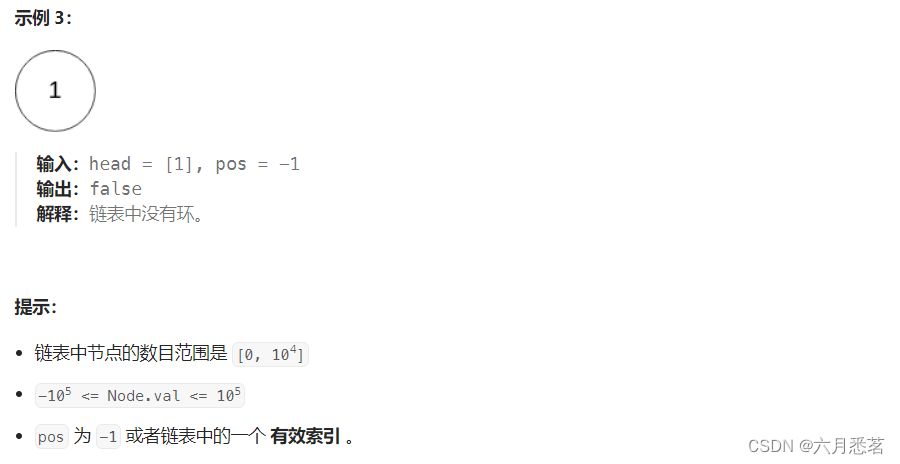
题解一: 哈希表
思路及算法
最容易想到的方法是遍历所有节点,每次遍历到一个节点时,判断该节点此前是否被访问过。
具体地,我们可以使用哈希表来存储所有已经访问过的节点。每次我们到达一个节点,如果该节点已经存在于哈希表中,则说明该链表是环形链表,否则就将该节点加入哈希表中。重复这一过程,直到我们遍历完整个链表即可。
代码
#include <stdbool.h>
#include <stdlib.h>
#include "uthash.h" // Include the uthash library for hash table operations
// Define a structure for the hash table entry
struct hashTable {
struct ListNode* key; // ListNode pointer as the key
UT_hash_handle hh; // UTHASH handle for hashtable
};
struct hashTable* hashtable; // Declare a pointer to the hash table
// Function to find a ListNode in the hash table
struct hashTable* find(struct ListNode* ikey) {
struct hashTable* tmp; // Temporary pointer
HASH_FIND_PTR(hashtable, &ikey, tmp); // Find the entry with the given key
return tmp; // Return the pointer to the entry (NULL if not found)
}
// Function to insert a ListNode into the hash table
void insert(struct ListNode* ikey) {
struct hashTable* tmp = malloc(sizeof(struct hashTable)); // Allocate memory for a new hash table entry
tmp->key = ikey; // Set the key of the entry
HASH_ADD_PTR(hashtable, key, tmp); // Add the entry to the hash table
}
/**
* Definition for singly-linked list.
* struct ListNode {
* int val;
* struct ListNode *next;
* };
*/
// Function to check if a linked list has a cycle
bool hasCycle(struct ListNode* head) {
hashtable = NULL; // Initialize the hash table to be empty
while (head != NULL) {
if (find(head) != NULL) { // If the current node is already in the hash table
return true; // There is a cycle
}
insert(head); // Insert the current node into the hash table
head = head->next; // Move to the next node in the linked list
}
return false; // No cycle found
}
/*
In the code above, the `HASH_FIND_PTR` macro is used to find an entry in the hash table based on a pointer key. Here is how `HASH_FIND_PTR` works:
1. Parameters:
- The `HASH_FIND_PTR` macro takes three parameters:
- The hash table name (in this case, `hashtable` )
- A pointer to the key being searched (in this case, `&ikey` )
- A pointer to a variable where the result will be stored (in this case, `tmp` )
2. Functionality:
- `HASH_FIND_PTR` is a macro provided by the uthash library that performs a lookup in the hash table.
- It takes the hash table name and the pointer to the key to be found.
- If an entry with a matching key is found in the hash table, the third parameter ( `tmp` in this case) will be assigned a pointer to that entry.
- If no matching entry is found, the third parameter will be set to `NULL` .
3. Usage in the Code:
- In the `find` function, `HASH_FIND_PTR` is used to search for a `ListNode` pointer ( `ikey` ) in the hash table ( `hashtable` ).
- If a matching entry is found, the function returns a pointer to that entry. Otherwise, it returns `NULL` .
4. Return Value:
- The result of `HASH_FIND_PTR` is stored in the variable `tmp` , which is then returned by the `find` function.
Overall, `HASH_FIND_PTR` simplifies the process of searching for a specific entry in a hash table based on a pointer key.
*/
复杂度分析
时间复杂度:O(N),其中 N 是链表中的节点数。最坏情况下我们需要遍历每个节点一次。
空间复杂度:O(N),其中 N 是链表中的节点数。主要为哈希表的开销,最坏情况下我们需要将每个节点插入到哈希表中一次。
题解二:快慢指针
思路及算法
本方法需要读者对「Floyd 判圈算法」(又称龟兔赛跑算法)有所了解。
假想「乌龟」和「兔子」在链表上移动,「兔子」跑得快,「乌龟」跑得慢。当「乌龟」和「兔子」从链表上的同一个节点开始移动时,如果该链表中没有环,那么「兔子」将一直处于「乌龟」的前方;如果该链表中有环,那么「兔子」会先于「乌龟」进入环,并且一直在环内移动。等到「乌龟」进入环时,由于「兔子」的速度快,它一定会在某个时刻与乌龟相遇,即套了「乌龟」若干圈。
我们可以根据上述思路来解决本题。具体地,我们定义两个指针,一快一慢。慢指针每次只移动一步,而快指针每次移动两步。初始时,慢指针在位置 head,而快指针在位置 head.next。这样一来,如果在移动的过程中,快指针反过来追上慢指针,就说明该链表为环形链表。否则快指针将到达链表尾部,该链表不为环形链表。
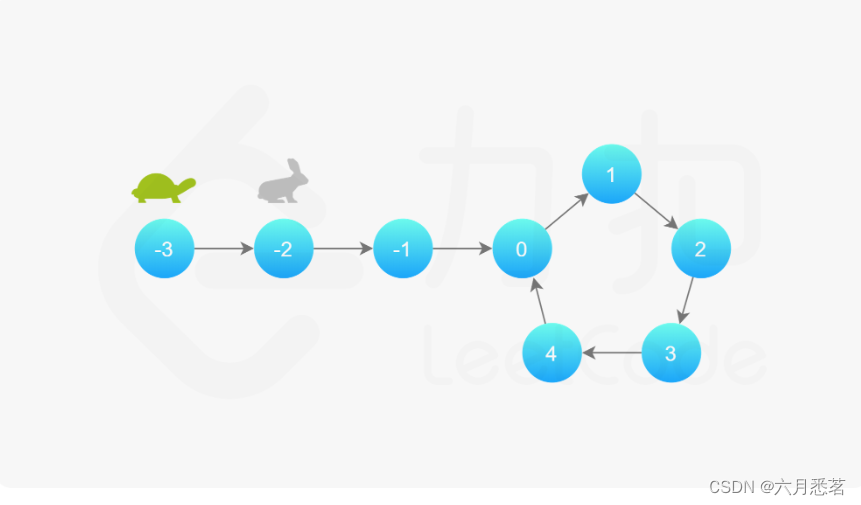
细节
为什么我们要规定初始时慢指针在位置 head,快指针在位置 head.next,而不是两个指针都在位置 head(即与「乌龟」和「兔子」中的叙述相同)?
观察下面的代码,我们使用的是 while 循环,循环条件先于循环体。由于循环条件一定是判断快慢指针是否重合,如果我们将两个指针初始都置于 head,那么 while 循环就不会执行。因此,我们可以假想一个在 head 之前的虚拟节点,慢指针从虚拟节点移动一步到达 head,快指针从虚拟节点移动两步到达 head.next,这样我们就可以使用 while 循环了。
当然,我们也可以使用 do-while 循环。此时,我们就可以把快慢指针的初始值都置为 head。
// Function to detect a cycle in a linked list
bool hasCycle(struct ListNode* head) {
// Check if the linked list is empty or has only one node
if (head == NULL || head->next == NULL) {
return false; // No cycle in this case
}
// Initialize two pointers - slow and fast,to traverse the linked list at different speeds.
struct ListNode* slow = head;
struct ListNode* fast = head->next;
// Move the pointers until they meet or fast reaches the end of the list
while (slow != fast) {
// If fast reaches the end of the list (or the next node is NULL), no cycle exists
if (fast == NULL || fast->next == NULL) {
return false;
}
// Move the slow pointer by one step and the fast pointer by two steps
slow = slow->next;
fast = fast->next->next;
}
return true; // If the loop breaks because slow and fast meet, a cycle exists
}
复杂度分析
时间复杂度:O(N),其中 N 是链表中的节点数。
当链表中不存在环时,快指针将先于慢指针到达链表尾部,链表中每个节点至多被访问两次。
当链表中存在环时,每一轮移动后,快慢指针的距离将减小一。而初始距离为环的长度,因此至多移动 NNN 轮。
空间复杂度: O(1)。我们只使用了两个指针的额外空间。
作者:力扣官方题解
链接:https://leetcode.cn/problems/linked-list-cycle/solutions/440042/huan-xing-lian-biao-by-leetcode-solution/
来源:力扣(LeetCode)
著作权归作者所有。商业转载请联系作者获得授权,非商业转载请注明出处。







![[计算机网络]---Http协议](https://img-blog.csdnimg.cn/direct/85666f3e835e446e924fb9ce42ad64ed.png)
